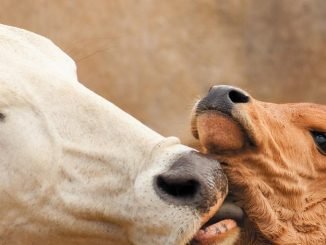
Kampala, Uganda | URN | A multi-sectoral initiative led by the Ministry of Agriculture has embarked on efforts to clear floating Islands that are currently eating up part of Lake Victoria.
In the second week of April, a twelve-acre island reached Nalubaale Power station in Jinja causing a countrywide power blackout. Since then, the government embarked on monitoring and aerial surveillance to locate and eventually dismantle the islands.
So far, four drone-based imagery surveys have been conducted in Murchison Bay and one in Jinja with the objective of keeping a close watch on the floating islands’ movements and guide machine deployment to right targets. The survey shows that there are about 100 hectares of floating weeds in Murchison Bay, Port Bell with more than ten hectares in Jinja district.
The State Minister for Fisheries Hellen Adoa stresses that the other problem areas where many floating islands are roaming include Bunjako Bay (Mpigi-Kalungu), Sango Bay, River Kagera in Kyotera district, and Fielding and Thruston Bays in Mayuge.
Experts in the agriculture ministry have blamed the occurrence of floating islands also known as suds to the rise in the water levels which has led to the detachment of large chunks of land and vegetation from the mainland in various parts of the country close to the lakes. The said vegetation has since started to move on the surface of the lakes.
At Port Bell, the floating vegetation has covered most parts of the pier causing a big threat to the marine vessels blocking them from getting direct access to the berthing terminals.
The vegetation which can mistakenly be seen as a usual wetland to strangers in the area has also covered up the entire part of Miami beach. However, the operation to clear this has since intensified and slowly it is being harvested, drawn out of the lake and dumped on the mainland.
Pius Wakabi, the Permanent Secretary of the Ministry of Agriculture notes that they have prioritized Port Bell and Jinja because these are likely to pose a threat of reinfection to the dam. He notes that the primary objective is to ensure that they don’t get into the Kagera-Nile channel.
“We have deployed excavators, dump trucks, self-loading trucks, barges, harvests, one fisheries research vessel and a ferry. With these, we break the floating weeds into small masses,” says Wakabi. He however notes that most of the equipment used had spent a long time without working thus facing several mechanical challenges which has delayed the process.
Read Also: Over 1,500 residents trapped in Masaka as lake Victoria submerges villages
Wakabi however notes that the bigger challenge still lies ahead on Lake Kyoga which is already affected by many heavy floating weed-mats including the Kariba weed. He adds that the ministry has however been carrying out special studies at L. Kyoga which they think will ascertain the current abundance and distribution of weed mats with the aim of unblocking and dredging the lake in the near future.
In addition to strengthening and developing a comprehensive strategy for Lake Kyoga aquatic weed management, the ministry is considering to fully maintain and operationalize the equipment on Lake Kyoga (Kakooge and Moone landing sites) that was used during the 1998-2000 blockage. Besides Lake Victoria and Kyoga, the ministry is also considering looking at other water bodies faced with a similar challenges.
The Director for Fisheries in the ministry, Dr Edward Rukunya notes that the suds posse a threat to aquatic life as they cut off oxygen supply thus a need to handle them quickly.



